
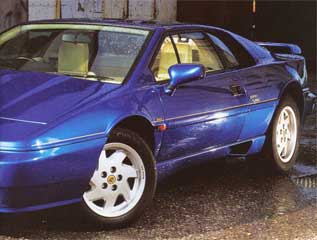
Smooth OPERATOR
It might not have the edge in looks
on Giugiaro's original Lotus Esprit
but, Peter Stevens' softer successor is a more practical proposition
Classic and
Sports Car, November 2005
words by Martin Buckley, photography by Tony Baker
History will probably judge the original Ital Design Esprit, current for 13 years, to be visually the most enduring mid-engined Lotus. It is bolder, sharper and somehow more authentic than Peter Stevens' revised, soft-edged late 80s version. Hindsight and prespective are beginning to play that cruel trick of making the older car seem younger and fresher.
Rewind to 1987 and it is easier to appreciate the rationale behind Stevens' revised Esprit, codenamed X180. The origami school of styling was rapidly falling out of favour and the cars that had once spearheaded the fashion did not always lead themselves to being reinvented in the new soft-focus idiom. For proof compare William Towns' original uncompromising chiselled Lagonada with the revised Series II car.
Equally it is easy to forget how overdue the new Esprit seemed in 1987 and how skilfully Stevens had retained the essence of the original while giving the car a more contemporary flavour.
The new Esprit – in Turbo form the world's fastest four-cylinder car – was created to two years on a modest £2 million budget. It was broadly a carry-over from the old car with the 215bhp HC Turbo on 172bhp normally aspirated engine, both running Dell'ortos. The main mechanical revision was a Renault GTA/25 transaxle replacing the old Citroën SM type.
From a styling point of view, Steven's brief was to maintain the A-pillar angle, window frames and the car's width (although he would have like to reduce it) and make the new Esprit easier to see out of, with a more comfortable and freshened-up the cabin. His idea was to develop the surfaces and shut lines and make it seem 'less like a collection of panels' while making a dramatic improvement to the drag factor but without compromising stability. In turbo form, with its skirts and spoilers, the old Esprit recorded an absurdly high 0.40cd although the factory claimed a much lower figure.
Perhaps even more significant was the fact that the new car, making extensive use of Kevlar, was 24 per cent stiffer than the old Esprit and easily passed Federal rollover test requirements. Paul Clugsten of UK Sports Cars near Canterbury bought his first Lotus – an Elan +2S – 30 years ago and has been enthralled by the marque ever since. He maintains that, with this generation of Esprit, Lotus finally shook off its reputation for kit-car fragility: 'Build quality started getting better from much earlier – probably 1984 or '85. So the worst would be an early Esprit Turbo – you'd be forever messing about with one of those."
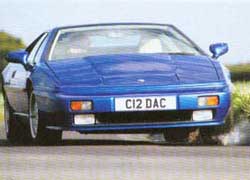
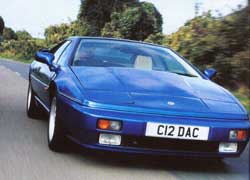
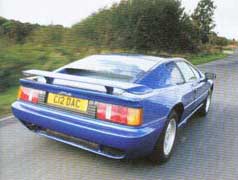
Although the basic shape was built over a long period, the market is not awash with cars: 'People only sell them because they acquire families or need a new kitchen or are moving aboard, but they are generally reluctant to part with them. Chances are they will come back in 10 or 15 years' time. We sell a lot to guys in their 50s and to people in their 30s who work in the City.'
Slicing down into the cabin, nostrils assailed by the leather, this car – a 1989 Turbo with SE wing, formerly owned by a Learjet pilot – feels a more together vehicle than any previous Lotus. It's a credible alternative to German and Italian supercars, rather than something that feels as if it collided with a branch of Halfords. It pulls off this trick,yet also manages to feel peculiarly Lotus-like at is core.
The cabin is not without its problems, however. Settling into the seat, hemmed in between the chunky central spine and door armrest, the pedals feel off-centre and close together, so it's easy to press brake and clutch at once. Your head feels close to the steeply raked windscreen pillar and there are distracting reflections in the glass from the demisting vents. The tops of the humdrum-looking instruments are slightly obscured by the top of the think steering wheel.
To the rear, the view through the shallow window is partly obscured by the spoiler but it is a much more airy car than its predecessor. That supple leather gives the interior a fairly upmarket flavour, slightly under-mined by the inevitable Morris Marina door handles. Lots of fiddly separate keys for doors, ignition and boot still give it that '70s specialist car feel too. There's a choke knob hidden below the steering wheel but it is more for reassurance than any practical purpose.
Dab the throttle a couple of times and the engine cranks over enthusiastically and fires quickly. It sounds intriguing rather than expensively exotic: the rustle and chatter of four cams and 16 valves and a flat, hollow exhaust note.
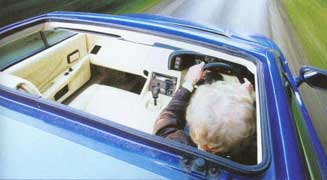
Manoeuvring around, the Esprit feels wide and cumbersome at low speeds, with fairly heavy steering, and quickly gets warm inside from the sun (this one has the removeable glass roof panel) rather than the engine which seems well isolated in terms of noise and heat soak.
As soon as speed picks up you realise the Esprit doesn't really need power steering. In all respects it is not a heavyweight to drive, with a surprisingly light, well-cushioned clutch although second gear demands that you fully depress the pedal.
The engine is smooth and flexible: slightly soft throttle response at speeds below 2500rpm – when the turbocharger begins to work hard – is the only giveaway to its state of aspiration.
Air flows smoothly over the shell, with a modest whistle around the driver's door seal and a relaxed gait that must make the Esprit a surprisingly mature long-distance car. The Renault five-speed gearbox doesn't do anything particularly wrong, but lacks the well-judged finesse of the Esprit's other controls. It is rubbery, long in throw and undistinguished.
But the Esprit is very fast. Using 7000rpm in second will take you almost to the motorway speed limit, third to nearly 100mph. You could trash your licence even before you'd got off the slip road. Using far fewer revs, the 153mph Esprit is a devastating overtaking tool in third and fourth. The turbo spools up with minimal delay as the car lunges past slower vehicles. Your head and upper body rock back and forward involuntarily with the wastegate's fluttering – dumping excess compressed air – as you lift between gears. That a mere four-cylinder engine can move what is quite a substantial car with such smoothly relentless urge is still amazing nearly 20 years on, even if it ultimately lacks the aural stimulation of its multi-cylindered contemporaries.
The chassis is hugely accomplished. Slung low beside the backbone, with the road rushing towards the plunging and invisible bonnet line, your impression is one of total stability with a willingness to change direction via sharp, responsive steering at odds with what three turns lock-to-lock might suggest. This, combined with a supple ride, a lack of body movement and the ability to generate huge grip on 60-profile tyres which even in 1987, weren't that low an aspect ratio, is the essence of what the Esprit Turbo – or indeed any Esprit – is all about.
Steer it in the appropriate direction – almost a matter of telepathy – and the Esprit merely whips you neutrally through the curve, seemingly an extension of your own senses; thrilling but entirely within itself as it rushes towards the next corner with a unbridled surge of energy.
Smooth or bumpy, those supple springs and the firm damping don't allow the road surface to compromise grip, leaving the driver free to savour the bite of the front end as it eagerly turns in and the grip of the rear wheels as another blast of power fires you out the other side.
It's easy to see why these cars, so fast and so capable, retain such a following. Clugston does a healthy trade in them and, while the Giugiaro shape retains a hardcore purist following, it's the later car most buyers are after.
"It's just more usable," he explains. "It's got a galvanised chassis, Nikasil liners... you just keep your eye on all the levels and gauges and get it serviced every six months or 6,000 miles. It's qute a practical car to use like you would a Porsche – in fact, they are better off used reguarly than tucked up in a damp garage getting rusty discs or seized calipers, wastegates and clutches."
But a full history is critical: a stamped service book with bills to go with it. "Service history tends to be a combination of specialists and main agents," says Clugston, "actually, most main agents would be scratching their heads if they had to look after an Esprit – they are more used to the Elise these days. You're better off with a specialist; there are not that many to choose from."
The secret of a long engine life is to warm them up sympathetically and cool them down properly: "With an alloy block and an iron exhaust manifold, the materials heat up and cool down at different rates, so don't just switch off after a hard run – let them tick over for 30 seconds."
Racks usually need replacing after 45-50,000 miles when the steering gets a bit notchy. "They gained power steering in 1993 on the S4 which was a revelation," adds Clugston, who, as a young man, got himself invited to the launch of the original Esprit Turbo. "As the years went on, from the late '70s, you could feel the weight going up."
You might come across a problem selecting gears on a hot day. This is so-called 'red hose syndrome' when the rubber hydraulic pipe that operates the clutch slave cylinder ballons and doesn't allow the clutch to fully disengage. "I've had a spate of them this summer," says Clugston, "the acknowledged modification is to fit a braided hose that doesn't expand."
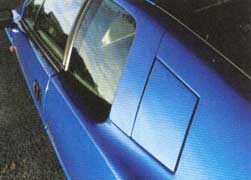
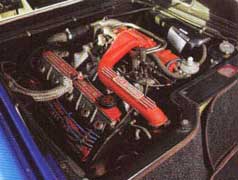
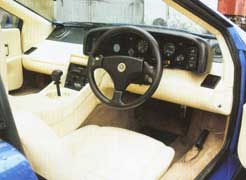
Cambelts should be changed every three years or 24,000 miles, about £250 all in, and the tension checked annually. Clutches last 45-60,000 miles and cost £300 in parts plus eight hours' labour. The original mild steel exhaust is usually replaced with a stainless system these days, at £200 plus two hours to fit. It is also worth uprating dampers to an adjustable type at £100 apiece, rather than original spec, which transforms the ride.
On the bodywork just look for accident damage and bad resprays. Problems with gel coats were sorted on this car, the chassis doesn't rust and the bodywork was beautifully made.
Crash damage can usually be repaired using the right resins and glassfibre matting – hang on to the bits that have fallen off, but repair sections are available. You might find water in the well where the light units sits but a judicious prod with a coat hanger to unblock the drain holes can sort this.
Walk away from a car with a bad interior – it shows it's been more generally abused. A shabby engine bay is another bad sign. And don't ignore things such as scuffed alloy wheels either.
Parts prices are not in the Porsche/Ferrari league. Front discs, for instance, are £46 each and it's £40 for a set of pads front and rear. A lot of the components are off-the-self and may have been remanufactured. Tyres for the car – Goodyear NCTs say – are freely available for between £70 and £100 a corner; the rears, at 235/60x15, are 40mm wider.
Neither is servicing expensive by supercar standards: Lotus specialists tend not to work from glamorous locations so the overheads are low. Clugston finds that cars tend to come in for general servicing rather than specific problems or little things such as a sticky electric window. "People are doing 5-6,000 miles a year in them as a second car," he says. "Most have five, six or seven previous owners and anything between 60-90,000 miles under their belts."
The cars are out there, but not in huge numbers, for between £10,000 and £15,000. The example here is up for £13,995.
So it wouldn't do to judge the Stevens car too harshly, even if you are a dyed-in-the-wool '70s man. The last model from the Lotus supercar era – the firm is now following a rather less ambitious path with the compact Elise – it is going through a middle-aged menopausal period.
If its '70s progenitor seems to come from the cheesy world of tinfoil catsuits and early digital watches – it could have been knocked-up as a prop for an episode of UFO – then its late '80s successor suffers because it's harder to find a cultural hook to hang it from. That doesn't mean it's not a great car though.
Thanks to UK Sports Cars, Wingham Kent. Call 01227 728190 or see www.uksportscars.com for details.
Note: Lotus Esprit World would not recommend using UK Sportscars
Owners View
DREAM CAR SUITS COMMUTESchoolboy Esprit enthusiast Paul Bappoo is now a 40 year old senior management consultant with Sapphire Systems. He runs a 1992 Esprit Turbo not as a weekend plaything but as an everyday car that lives outside in all weathers.
'It replaced a BMW 3 series 18 months ago,' he says, 'and, apart from a few electrical problems – central locking and a glitch in the electronic ignition that brought the car to a halt – it has been pretty dependable over the past 10,000 miles. 'It is a car that is just as happy driving to Scotland as it is doing more mundane tasks such as shopping and driving to the station. Although, if the weather is really bad – icy, for example – then Bappoo takes his wife's off-roader to work. 'You have to have a back-up when you run a sports car,' he points out. He tried a non-turbo Esprit but Bappoo is glad that he bought the Turbo. He says the Esprit is not thristy unless you drive it hard and is not even expensive to insure: £450 with Lancaster.
Major servicing is done by a specialist but Bappoo is happy to tackle routine stuff: 'It is possible to do little jobs yourself, like change plugs, it's not a car that has to be plugged into a computor to be serviced.'
The 1992 car will probably be replaced by another Esprit: 'I have a plan in the back of my mind – which the wife is unaware of – to buy a much later model; I do miss power steering. But otherwise it's perfect for what I want at the moment – I'm living my dream!'
Lotus Esprit
Engine all-ally dohc 2174cc 'four', with twin Dell'orto carbs; multipoint injection from '89
Max power 215bhp @ 6000rpm
Max tourque 220lb ft @ 4250rpm
Transmission five-speed Renault UN1-16
Suspension: front double wishbones, coil springs, telescopic dampers, anti-roll bar
rear upper and lower transverse links, radius arms, coil springs, telescopic dampers, anti-roll bar
Steering rack and pinion
Brakes Toyota vented discs front, Bendix solid discs rear, with servo; dual circuit, split front:rear
Lenght 4331mm
Width 1860mm
Height 1149mm
Weight 1267kg
0-60mph 5.1 secs
Top Speed 153mph
Price New £28,900
Now £10-15,000Esprit Milestones 1975-2002
1975
First Esprit shown in prototype form at Paris and London shows but doesn't enter production until May 1976, priced at £7883. Retrospectively known as S1: coloured GRP body. Wolfrace wheels and 2-litre engine. Not as fast as expected, dubious build quality and poor steering feel.
1978
Modest changes for S2: nose spoiler, air scoops in roof quarter panels plus improved seats and instruments and Speedline wheels. Minor changes to front suspension geometry and reprofiled camshaft – but still not fast enough. Photo shows JPS limited edition.1980 (January)
S2.2 introduced with 912 series twin-cam, with new cams and rejetted carbs, replacing the 907: capacity up to 2174cc from 1973cc. No more power but useful extra torque. Only 88 built.
1980 (February)
Essex Turbo launched at Albert Hall, on sale August. More muscular look, with rear-window slats, Compomotive (later BBS) wheels with Goodyear NCTs and tail-lip spoiler. Stronger chassis, with revised suspension; driveshaft no longer doubled-up as top links but was supplemented by transverse link.Twin cam re-engineered with lower compression, sodium-filled valves and dry sump. Garrett AiResearch T3 Turbo. Bond drove one in For Your Eyes Only (above).
1981 (March)
S3 introduced as a normally aspirated Esprit, with Turbo chassis and suspension modifications and lower price than the S2.2.1981 (April)
After 104 Essex Turbo cars, a cheaper, rationalised Turbo Esprit was introduced in conventional livery – with leather and air conditioning as options and a less exotic stereo system. It became Lotus' best-selling model.
1987 (February)
Turbo Esprit HC announced with high compression engine, more boost, improved carburetion, lubrication and cooling. Power up to 215bhp, torque 220bl ft.
1987 (October)
Peter Stevens' new Esprit Turbo launched (X180): stiffer body, more slippery shape, Renault gearbox, improved interior, outboard rear brakes. Supplemented by 264bhp Turbo SE with watercooled turbocharger and, in 1991, a 'high wing' version. Also, in 1988, 40 Pearlescent white Esprit Turbos produced to mark Lotus' 40th anniversary.
1992
Lightweight Esprit Sport 300 launched: 300bhp, racing brakes, optional roll cage. Lotus enters two for le Mans 24 Hours the following year.
1994
S4S launched at the Motor Show: one of the best of the four-cylinder cars, with 300bhp; good for 0-60 in 4.6 seconds and 168mph. Big brakes, with ABS.
1996
Esprit V8 launched at Geneva, with twin-turbo, 32-valve 3.5-litre V8, supplemented by GT3 still with four-cylinder power. The V8 range expands in 1997 with more luxurious SE and a lighter, more basic GT, both with revised interiors.
1998
The fastest roadgoing Esprit: the 175mph Sport 350 with carbon-fibre wing. Emissions regs kill off GT3 in '99. Final makeover, by Russell Carr for 2002, has Elise-style rear lights.MIDDLE GROUND
1989-94 FERRARI 348
Grown-up MR2 looks, from an era when Ferrari seemed incapable of making a nice-looking car, did not endear this 328GTB replacement to some people. Longitudinally mounted quad-camshaft V8 gave 170mph performance and commensurate acceleration that made the dinosaur Testarossa seem vaguely irrelevant. Body was good aerodynamically if not visually.
1986-93 RENAULT GTA/A610
Rear rather than mid-engined but probably the Esprit's closest period rival. Great handling and grip and, with 2.8 turbo V6, very quick, but some said the normally aspirated model was the nicer drive. Briefly fashionable after rave reviews but Renault badge lacked snob value. Now a bargain: post-91 GTA has 3 litres, 250bhp.
1987-2000 VENTURI
Obscure French middie had troubled past dating from 1985 and has been powered by various engines (mostly Douvrin V6 based) in a smooth but bland coupé body. Made in fits and starts at several locations; last heard of in Monaco. Fleetingly sold in the UK and quite warmly reviewed, it would be an intriguing find, particularly on of the 187mph 400GTs (shown).